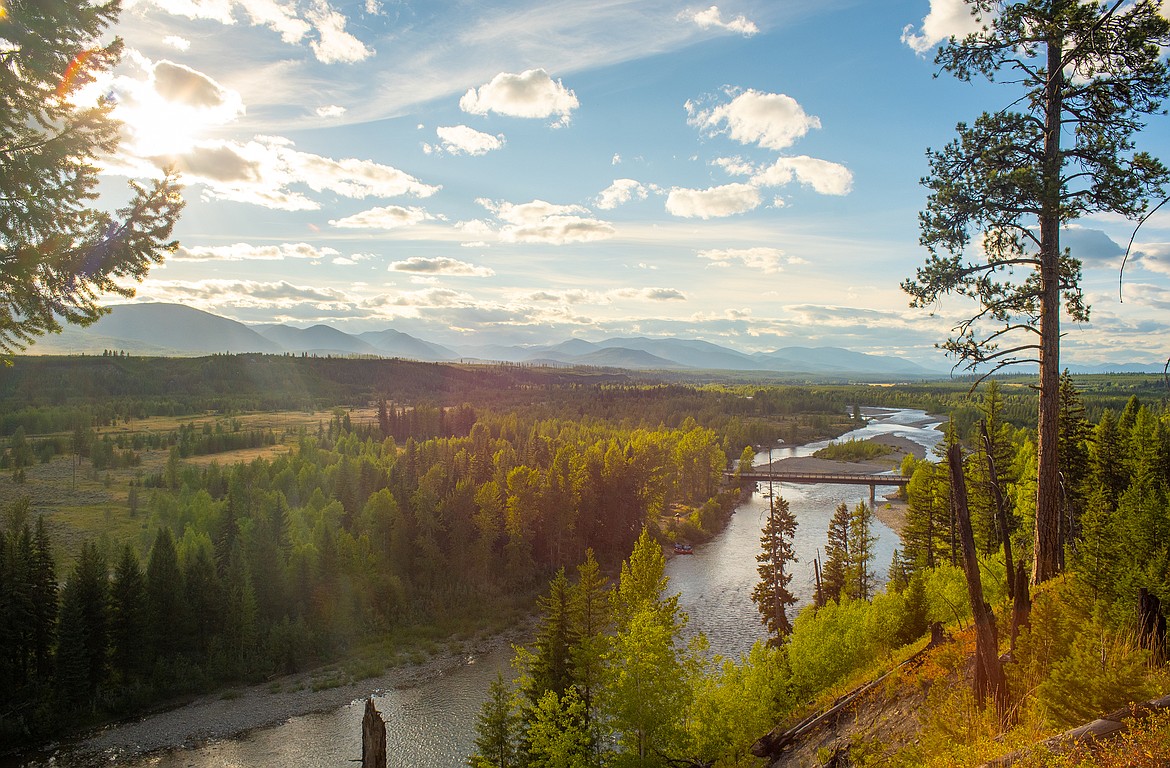For 40 years, fighting to protect the North Fork
By CHRIS PETERSON
Hungry Horse News
The year was 1982. The Canadians were eyeing lopping off the top of a mountain just north of Glacier National Park for the Cabin Creek coal mine.
The results for the North Fork of the Flathead River would have been wide-reaching and deleterious for the Park and the river.
So a few like-minded North Forkers got together and decided to fight the mine.
Frank Vitale was at that first meeting, along with John Frederick and several others.
The North Fork Preservation Association was born. This weekend, it will celebrate its 40th year as an organization.
Vitale would stay with the organization for decades; he was vice president for 25 years.
The fight against the Cabin Creek Coal mine was a galvanizing event. The late Frederick bought stock in Rio Algom, the company proposing the mine, so he could attend shareholders meetings back East and rail against the mine.
“There were all these big rich oil tycoons,” Vitale recalled. “And then John Frederick in a 10-gallon hat and a bolo tie.”
Other threats to the North Fork and its way of life also reared up over the years.
Coal bed methane, oil wells, natural gas wells. Vitale recalled an oil company representative pulling up to his place in the North Fork, wanting him to sign a drilling lease.
“Ma’m,” he said. “Get in your truck and drive out of here.”
But some took up the offer.
In 1989, Tom Ladenburg, the largest landowner in the North Fork, allowed Cenex to drill an exploratory oil well at Home Ranch Bottoms.
NFPA sued the state oil and gas board on grounds that the proper environmental review wasn’t done — and they won. Vitale recalled the well pad had floods lights and razor wire around it to keep people out.
The well didn’t pan out and in a reversal of fortune, Ladenburg, at the twilight of his life, put his ranch — more than 2,000 acres, into a conservation easement brokered by the Nature Conservancy, protecting it from energy and housing subdivision.
Proposals for wells and coal mines would continue to threaten the North Fork for decades. But Some arguments have been settled over the years. The threat of industrial mining and development in the North Fork on both sides of the border was largely settled.
In 2014 Congress passed the North Fork Watershed Protection Act which withdrew all minerals on federal lands in the U.S. North Fork Drainage from “future entry,” as a quid pro quo measure to the British Columbia Cabinet’s 2010 “Flathead Watershed Protection Act,” which banned the same in Canada.
Not everything over the years has been quite as a contentious as coal mines and oil wells.
The NFPA was a key voice in the North Fork neighborhood plan, which, among other things, capped subdivision of new lots to 20 acres on private lands.
They also came together with other stakeholders in the Whitefish Range Partnership, which helped craft language into the Flathead National Forest’s 2018 Forest Plan.
The plan, a true collaborative effort, does its best to balance timber, wildlife, wilderness and recreation demands on the Forest Service’s North Fork lands.
There is still controversies, of course.
The push to pave the lower North Fork Road from Glacier Rim to the Camas Bridge has been a longstanding dispute.
Flannery Fruend, the current president of the NFPA said the organization continues to oppose any effort to pave the road.
“It’s the most iconic backyard in the Flathead,” she notes. It’s still one of the few places in the Lower 48 without grid power. One of the few places with no cell phone service. One of the few places with grizzly bears and wolverines and a largely intact ecosystem.
Yes, there are challenges ahead, she says.
“But all of that is worth fighting for,” she said.
The NFPA will celebrate its 40th year with a dinner and presentation July 23 at Sondreson Hall up the North Fork with an indigenous meal at 5:30 p.m., followed by a short business meeting at 6:45 p.m. and a talk by author Sally Thompson at 7:30 p.m. on her co-authored book, “People before the Park.”


